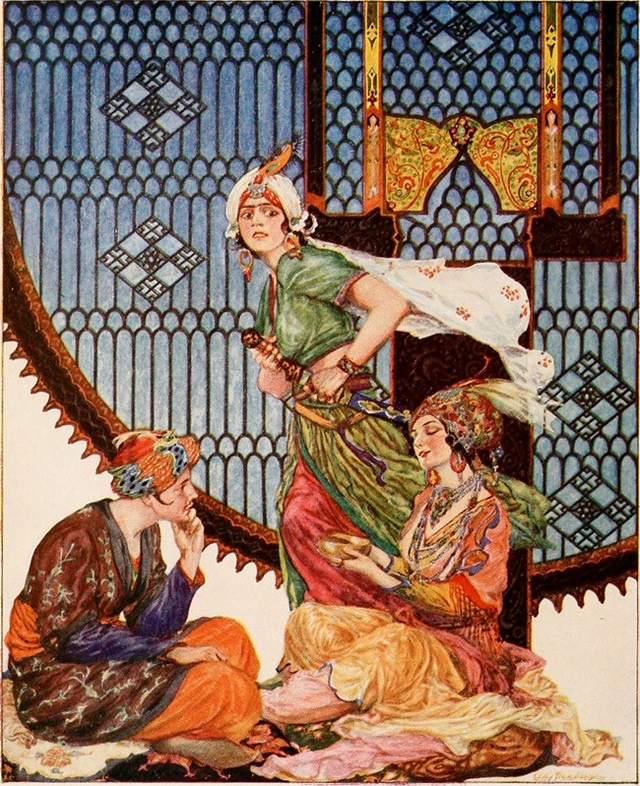Seychellois academic shows links between Creole folktales and stories from "The Arabian Nights"

Choppy said an example showing the diasporic origins of the Seychellois people is "The Arabian Nights or The One Thousand and One Nights. (Internet Archive Book Image) Photo Licence: CC0 1.0
(Seychelles News Agency) - Seychellois academic and director of the Creole Language and Culture Research Institute (CLCRI) at the University of Seychelles (UniSey), Dr. Penda Choppy, has identified that the traditional folktales in the Seychelles repertoire could be used to trace the diasporic origins of the island nation's people.
Taking three years in total to complete, Choppy's PhD thesis entitled "Creativity, Creolisation and Identity in Seychellois Creole Folktales," delved into the intriguing world of Seychellois folklore, uncovering its rich history and its potential to reveal crucial insights into Seychellois culture and identity.
Her research examines how Seychellois folktales represent the diverse diasporas that shaped the island nation's population and part of her research delves into what she has described as the Arabian Nights, where she looks at the origins of several old folktales.
Choppy stated that an example showing the diasporic origins of the Seychellois people is "The Arabian Nights or The One Thousand and One Nights," which appears in the Seychelles folktale repertoire and is part of this inheritance.
"Because Seychelles is now a literate society, most people assumed that The Arabian Nights was introduced to the general population via fairytale books or Hollywood renditions of stories from the series, for example 'Sinbad the Sailor', and more recently, 'Aladdin by' Disney. However, during my study of Seychelles folktales as showcases of the creolisation process and identity markers, I put together the beginnings of a folktale database. I discovered that certain stories from our repertoire are linked to The Arabian Nights. What was more surprising was that not all of these stories necessarily came from European written sources, but could have come through oral transmission from regional sources," she shared.
Choppy mentioned Eleonore Finesse, a Seychellois who shared several accounts of folktales she knew for documentation, for example for the story of Aladdin.
"It is interesting that Marvelle Estrale, the researcher who collected the story in 2002 revealed the fact that the informant, Eleonore Finesse, who at that time had been 80 years old, had said that the story had been transmitted to her by her grandparents. During some fieldwork in June 2020, another informant, Rene Bastienne, said that he remembered being told the Aladdin story by his grandfather when he was a child. At the time of the interview, Bastienne was 73 years old," said Choppy.
Choppy remarked that The Arabian Nights is not the largest section of the thesis, comprising only about five stories and one motif (the forty thieves), but it was one of the most interesting and surprising findings.
"A search for the possible origins from which the stories came to Seychelles was made using Google, through a comparison of texts from the different online databases such as the Multilingual Folktale Database. It was possible to establish which text had the closest resemblance to the Seychelles one. This was then analysed in the historical context of folklore transference in the Indian Ocean region," she added.
Choppy surmised that these folktales contained clues relating to their origin in the way they were structured and the kind of terms and names used.
"For example, there are two sets of tales originating from India in the Seychelles repertoire: those that were transferred via Europe, and those that were transferred either directly from India or from Eastern Africa. Close text comparison made it possible to determine the specificities of each," she stated.
Dr Choppy concluded that many popular fairy tales associated with the European tradition originated from Asia namely India, Indonesia, Sri Lanka, China, Egypt and Persia.
"It seems that stories and other types of folklore from India and Southeast Asia might have been transferred to the Middle Eastern region by Arab seafarers who later translated them into Arabic. As a Creolised culture, this is part of our inheritance from various periods of cultural transference in our region," she said.





